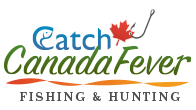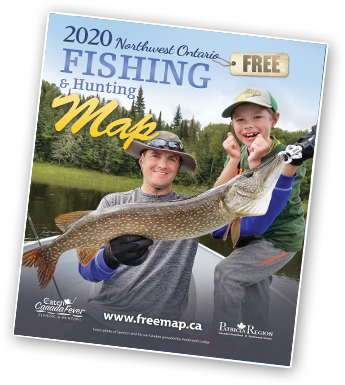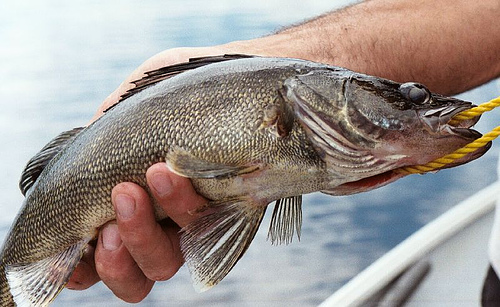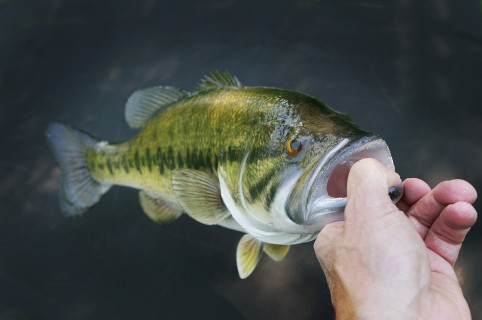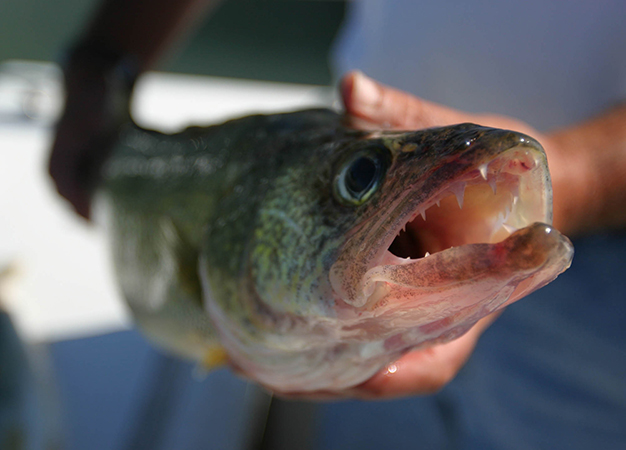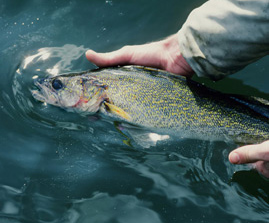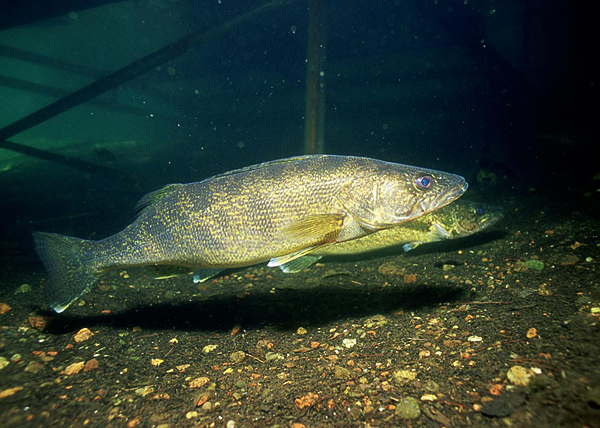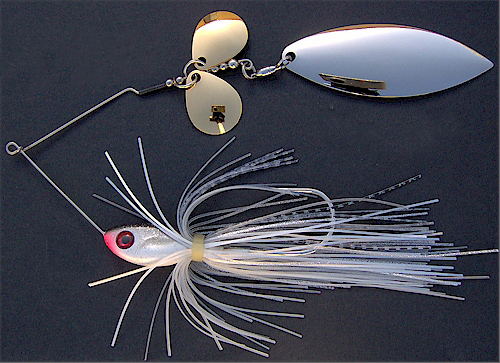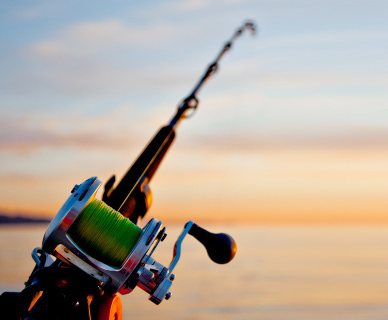There is nothing more exciting than watching a bobber sink beneath the surface while anticipating a huge hog walleye on the other end of the line. Live baits and floats can be especially effective for both northern pike and muskies. But current and waves constantly move the bobber and bait out of position, which forces me to crank in and cast out again. Constant casting and retrieving reduces productive fishing time and can also quickly kill a big bait fish.
Then one day a solution came to me. Why not use a weight to hold the rig stationary? I retied the rig with a 1-oz egg-style slip sinker on the fishing line above the float. Since I was fishing for pike, I added an 18-inch wire leader above the size 4 Eagle Claw Lazer treble. 12 inches above the treble hook, I added a 1/8-oz lead core sinker. Finally, a 5-inch chub was hooked just beneath the skin between the dorsal and tail fins.
After casting, the slip sinker fell to the bottom and the bobber popped to the surface. And the weight did exactly what I had hoped for. It kept the float and minnow from being moved by the wind, waves, or current.
The 6-foot rod had to be held stiff armed and cast straight overhead. I later discovered that a 8 1/2-footer cast much better, and the taller rod created a shaper angle between the rod and float. During the cast, the egg slip sinker came to rest on top of the bobber then it fell off the instant the float hit the water. This created minimal slack line between bobber and egg sinker, which kept the bait precisely positioned in the desired spot. The reel was set on free spool, so a fish could take the line when it grabbed the bait.
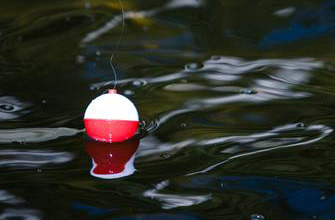 When choosing a float for this rig, select one that is large enough to come to the surface yet not so large that extra resistance causes the fish to drop the bait. Another tip is to use a 1/8-inch drill bit to ream out the hole in the slip sinker. The bobber more easily pops to the surface because the monofilament line flows more smoothy through the enlarged opening.
When choosing a float for this rig, select one that is large enough to come to the surface yet not so large that extra resistance causes the fish to drop the bait. Another tip is to use a 1/8-inch drill bit to ream out the hole in the slip sinker. The bobber more easily pops to the surface because the monofilament line flows more smoothy through the enlarged opening.
In the late spring and summer, lip hooking a big minnow works fine. Bait fish are more active in warmer water and swim around enticingly when lip hooked. However, in cold water, try hooking the bait fish in the back, and place the hook just under the skin to avoid injuring the minnow’s spine. To achieve the most active baitfish, hook between the dorsal and tail fin. The baitfish constantly struggles to swim up.
The bobber often signals when a predator fish approaches, because the bait fish tries to swim away. If the bobber starts moving, get ready! But don’t try to set the hook as soon as the float sinks beneath the surface. Instead, point the rod tip to where the bobber was last seen and begin cranking the reel handle as fast as you can. Set the hook only after feeling the weight of the fish.
The slip sinker allows the line to move freely in any direction, and the reel’s open bail allows the fish to take additional line. The fish my be anywhere. Jerk the rod into slack line and it won’t set the hook in a pike’s boney jaw. But the fish my feel the slight tug and drop the bait.
One time I was fishing for northern pike and the bobber disappeared under the surface, I grabbed the rod and started cranking the reel handle like crazy. After what seemed like an eternity, I saw the line cutting the water, heading straight back to the bank. Finally, I felt the fish and set the hook. An 8-pound pike went airborne 10 feet from where I was standing. If I had first tried to set the hook without cranking up the slack, that fish wouldn’t have been caught.
When fishing with multiple anglers, keep some space between the lines. Walk the shoreline and toss out a bait next to each submerged tree, point, feeding shelf, weed patch, etc. Just be sure to not exceed the legal number of fishing rods the state/province allows. Use brightly colored bobbers for visibility. Space the anglers apart so that you can easily monitor the floats at all times. A picket line of rods at key spots greatly increases the chances of catching something big.
Live bait requires a patient angler. Baitfish need time to perform their siren dance in front of a submerged stump or tree. Let those enticing gyrations pull the predator from its lair.
A good spot for stationary canoe fishing for pike or muskie is where a rain-swollen creek flows into a lake. The flooded stream carries all kinds of food, which attracts minnows and other small kinds of fish. Predators come to these dark waters to feed on the buffet of baitfish. Cast your slip sinker bobber rig in the clear water beside the mud line. Not only do muskie and pike frequent these spots, but all kinda of other game fish may grab the bait, too.
When fishing the weeds, remember pike and muskie prefer scattered vegetation. Position the bait on the outside of thin, weedy areas. Travel routes are another good spot to float fish for big pike. I especially like to fish a bobber rig off a point that drops into deep water. Eventually the fish leave the deeper water and go looking for a meal. Position your stationary float to intercept these feeding fish.
Cold water makes fish less active and less likely to chase after a meal. But put a healthy minnow right in front of a pike’s nose, and eventually its predator urges take over. Sunny days are especially productive. Look for northerly shorelines that get sun. Black, mucky banks are best because they catch the sun’s rays and warm the water. Exposed trees are a bonus because their dark bark also holds heat. Any warmer water is likely to draw in the bait fish that attract pike.
Where lakes freeze over in winter, use a stationary float rig to fish in the open tributary streams. Even in near freezing water, river pike will grab at baitfish under a stationary float. Any sizable stream that flows in or out of a lake that holds pike will probably have some pike, too. Check local laws for pike seasons.
During warmer months, fish the pools that have overhanging limbs to provide plenty of shade. If there is a deep water undercut bank, definitely toss a bobber-held bait next to that bank, especially where you can see a boulder or fallen tree. Pay special attention to where a feeder creek empties into a river, forming a deep hole. This is a dynamite spot for pike and muskie.
The stationary float rig works well from a boat. In fact, boaters have the advantage of being able to position the craft for precise casts to fish-holding targets. For muskie and pike, pay special attention to deep weedlines and stump fields near deep water. Another good summer spot is a deep-water hump with weeds on top.
To prevent the boat swinging around all of the time, use a bow and stem anchor. However, Don’t use 2 anchors when fishing from a smaller boat in large waves or areas that get heavy wake from barges and other large boats. If the anchor ropes are snug enough to hold the boat, they also may make it susceptible to swamping.
6-Inch suckers, chubs and river shiners are prime baits for muskie and northern pike. Unfortunately, most bait shops don’t carry bait that size, and when they do, they usually charge big bucks.
I gather my own with minnow traps and a 2-man seine. If you don’t have the seine or traps, remember, kids love fishing, too. Bait the size 10 hooks with maggots on pinches of worm. In the right place they’ll catch you a bucket full of big shiners, suckers and chubs.
Transport the bait home in large, aerated buckets and keep it in a shady spot. If storing for several days, place in a large container like a garbage can, and aerate the water with an aquarium pump.
Believe me, the stationary float rig is ideal for fishing with big lively baits!

